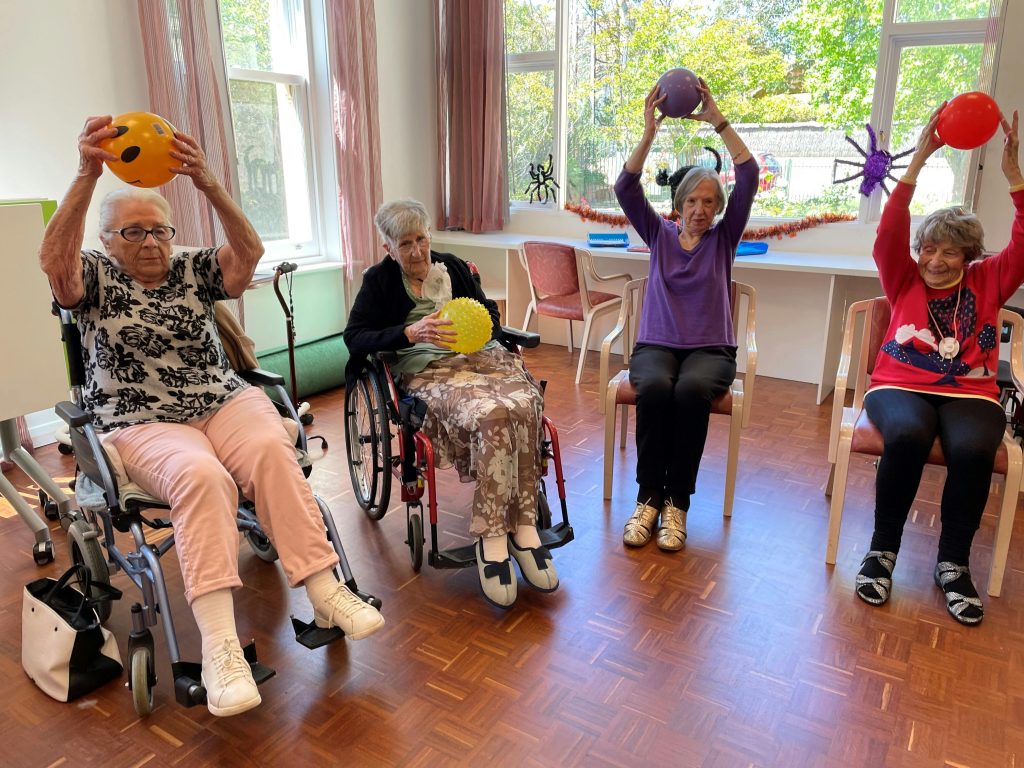Promoting active lifestyles and fostering social connections in senior living communities are essential to enhancing the quality of life for older adults. A comprehensive approach addressing physical, mental, and emotional well-being can lead to more fulfilling and healthier lives for seniors.
Importance of Active Lifestyles and Social Connections
Physical Health Benefits
- Improved Mobility: Regular physical activity helps maintain and improve mobility, reducing the risk of falls and injuries.
- Chronic Disease Management: Exercise aids in managing chronic conditions like arthritis, heart disease, and diabetes.
- Strength and Flexibility: Enhances muscle strength and flexibility, which are crucial for daily activities.
Mental Health Benefits
- Cognitive Function: Physical activity can improve cognitive functions and reduce the risk of dementia.
- Mental Well-being: Regular exercise can alleviate symptoms of depression and anxiety.
- Quality of Sleep: Engaging in physical activities can lead to better sleep patterns and overall restfulness.
Social Benefits
- Sense of Belonging: Social connections provide a sense of belonging and community.
- Reduced Loneliness: Active social engagement can significantly reduce feelings of loneliness and isolation.
- Support Networks: Having strong social ties offers emotional and practical support in times of need.
Strategies to Encourage Active Lifestyles
Structured Exercise Programs
- Fitness Classes: Offer a variety of fitness classes such as yoga, tai chi, and aerobics tailored to seniors’ abilities.
- Personal Training: Provide access to personal trainers specializing in senior fitness.
- Group Activities: Organize group exercises like walking clubs or swimming sessions to promote social interaction and physical activity.
Recreational Activities
- Gardening: Encourage participation in community gardening, which offers physical exercise and mental relaxation.
- Dancing: Host regular dance nights or dance classes to combine physical activity with social fun.
- Sports and Games: Facilitate low-impact sports like bocce ball, shuffleboard, or table tennis.
Daily Movement Integration
- Walking Paths: Create safe and accessible walking paths within the community.
- Functional Fitness: Incorporate physical activity into daily routines, such as stretching sessions or balance exercises.
- Active Design: Design environments that encourage movement, like having centrally located amenities that require walking.
Strategies to Foster Social Connections
Community Building Activities
- Events and Celebrations: Regularly host events like birthday parties, holiday celebrations, and cultural festivals.
- Interest Groups: Create clubs and groups based on common interests, such as book clubs, art groups, or knitting circles.
- Volunteer Opportunities: Encourage residents to participate in volunteer work, fostering a sense of purpose and community involvement.
Technology Integration
- Social Media Training: Offer training sessions on how to use social media platforms to stay connected with family and friends.
- Virtual Gatherings: Organize virtual meetups and events for residents who may have mobility issues or prefer online interactions.
- Tech Support: Provide ongoing technical support to help residents stay connected through digital means.
Intergenerational Programs
- School Partnerships: Collaborate with local schools for intergenerational programs where students visit and engage with residents.
- Family Involvement: Encourage family members to participate in community events and activities.
- Mentorship Programs: Facilitate mentorship opportunities where seniors can share their knowledge and experience with younger generations.
Implementing and Sustaining These Strategies
Staff Training and Engagement
- Professional Development: Ensure staff are trained in promoting active lifestyles and facilitating social connections.
- Resident Involvement: Involve residents in planning and decision-making processes for activities and programs.
- Feedback Mechanisms: Regularly gather feedback from residents to improve and adapt programs to their needs and preferences.
Environmental Design
- Safe and Accessible Facilities: Design facilities to be safe and accessible for all mobility levels.
- Welcoming Spaces: Create inviting common areas that encourage social interaction.
- Adaptive Equipment: Provide adaptive equipment and tools to help residents participate in various activities comfortably.
Monitoring and Evaluation
- Health Metrics: Track residents’ health metrics to assess the impact of physical activities.
- Participation Rates: Monitor participation rates in various activities to identify popular programs and areas for improvement.
- Resident Satisfaction: Conduct regular surveys to gauge resident satisfaction and make necessary adjustments.
Conclusion
Encouraging active lifestyles and fostering social connections in senior living communities is vital for enhancing the overall well-being of older adults. By implementing a variety of structured exercise programs, recreational activities, community-building initiatives, and intergenerational programs, senior living facilities can create vibrant, engaging environments that support physical, mental, and social health. Ensuring ongoing staff training, resident involvement, and continuous evaluation of programs will sustain these efforts, leading to happier, healthier, and more connected senior communities.



